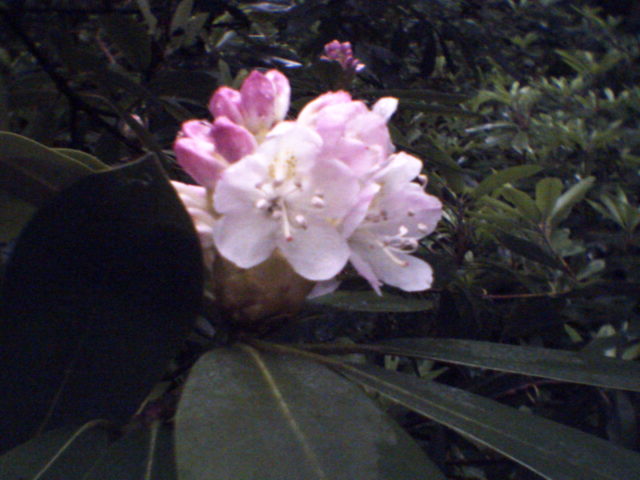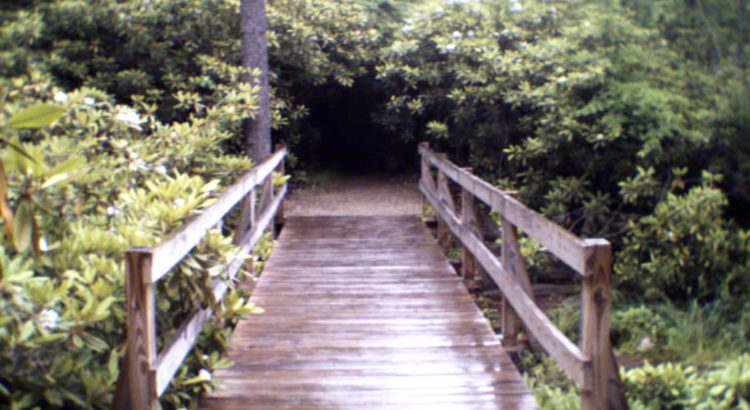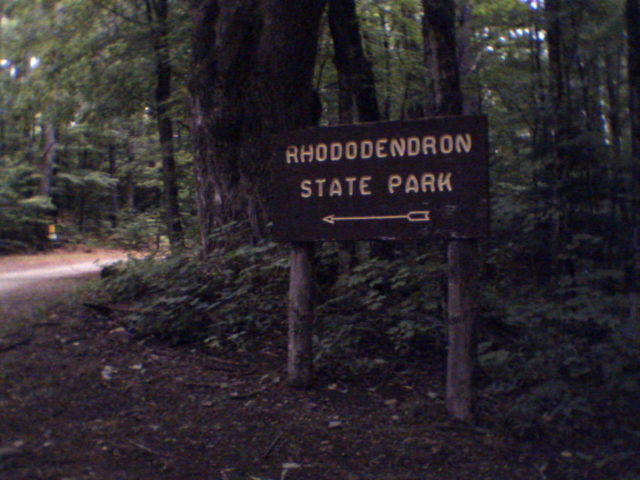
Rhody-lovers all over New England watch Rhododendron State Park with hawk eyes, awaiting the “big bloom.” Mid-July is here, bringing with it the annual explosion of wild rhododendron flowers—or so we hope. Many travel for miles to see the spectacle. Some manage to catch it, others don’t. It’s not always easy to time a surefire date with the flowering rhododendron at the apex of its glory, but our fondness for fleeting things drives us to pursue the beauty of flowers, to live in the moment and enjoy them while we can.
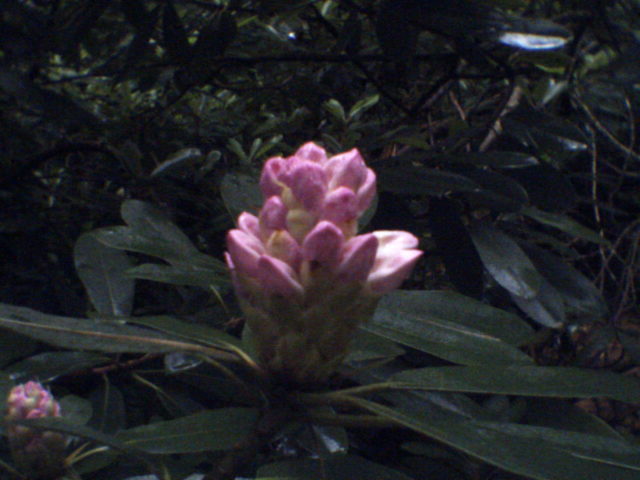
A few days ago, I visited the park and found some early-comers. A good sign! It was raining, and the sky was overcast and a bit grim, but a handful of large, pink and white bell shapes have emerged. I saw them like bulbs of brightness, nestled softly amongst the dark, wet leathery leaves. The rest of them are coming!
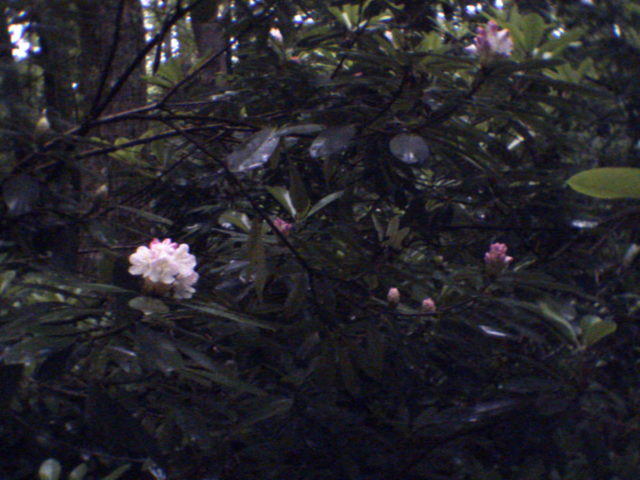
I’d never been to Rhododendron State Park before. I wasn’t expecting to see any blooms, and though I’d read about the tunnel of rhododendrons beforehand, I wasn’t prepared for the poetry of contrast of light and dark, the intimacy of being enclosed in the rhododendrons and then released into the sunlight.
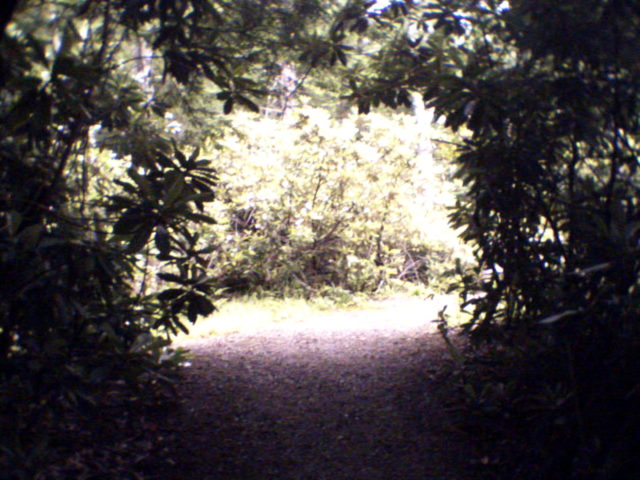
Both old, ornate and wild, it feels like walking through a garden from another time, something like the garden in “The Secret Garden.” As others before me have written, the experience was both calming and refreshing. I couldn’t help but think of Rhododendron State Park as a microcosm of “Rhodoland” that part of the earth famous to botanists as dominated by impenetrable thickets of rhododendron shrubs.
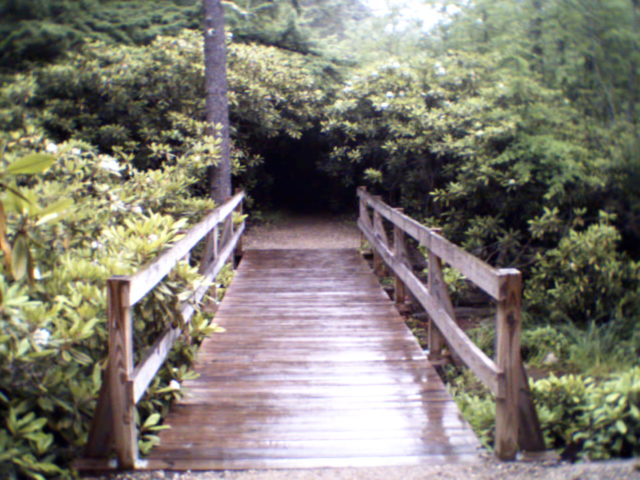
Rhododendron State Park is part of NH State Park’s “Hidden Gem” series, and with good reason. It’s the largest wild rhododendron grove in all of New England, a very special place. I think of it as a peaceful haven tucked back in the forests of Fitzwilliam, perfect for quiet, introspective walks or those last minute hikes to the summit of Little Monadnock, to catch a nice sunset view of Grand Monadnock.
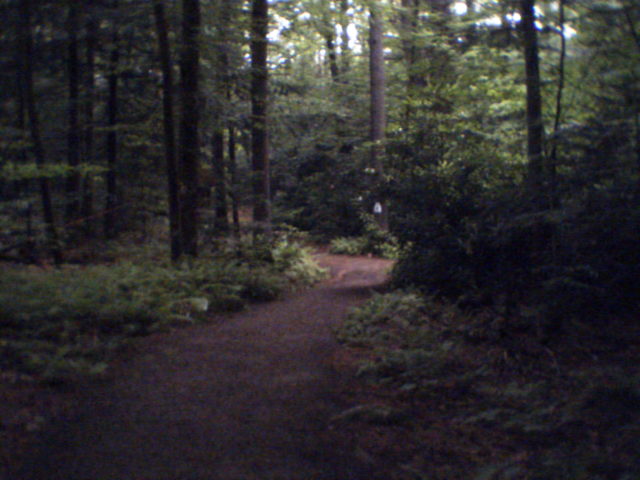
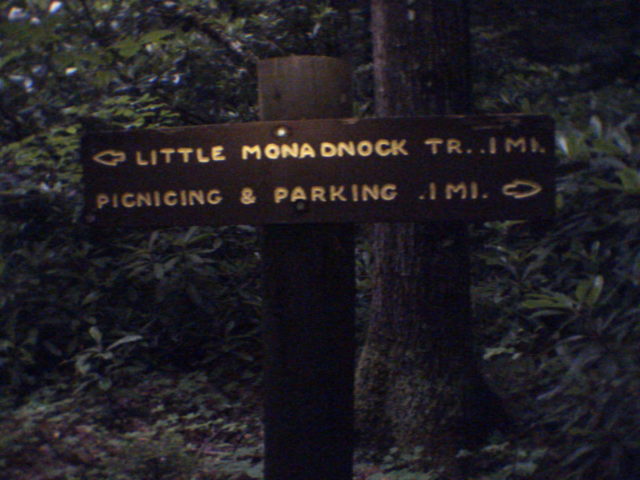
The legends, meanings and uses of rhododendrons are by far more personally interesting to me than any fact I could regurgitate about their reproduction and botanical science. Also referred to as the “alpenrose,” the name is a joining of the greek words for “rhodon” (“rose”) and “dendron” (tree). They are an ancient species of evergreen shrub, the symbol of caution and awareness, known for their toxicity. They have been used to treat psychotic illness, mainly through rhododendron-induced interpretation of dreams, and the leaves used for poultices and other homeopathic remedies. Xenophon’s starving army drank the “toxic honey” produced by bees that pollinated rhododendrons in what is now modern Turkey, and were said to go mad. One Nepalese legend tells of the rhododendron’s rejection of the alder tree’s marriage proposal, and how this is the reason why trees don’t marry anymore.
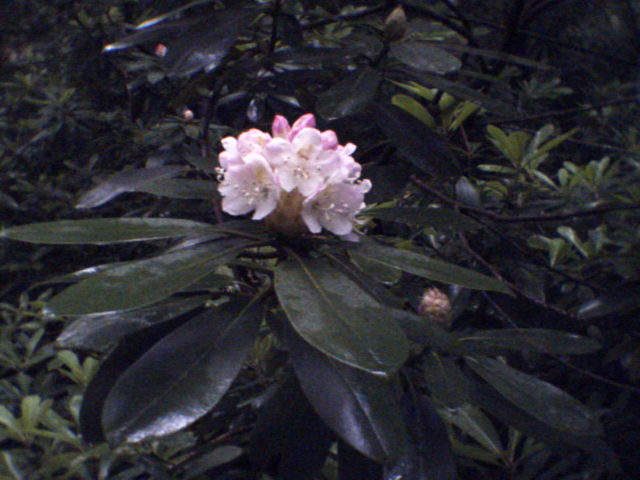
These pictures don’t do the park enough justice, so please come and see if for yourself!
